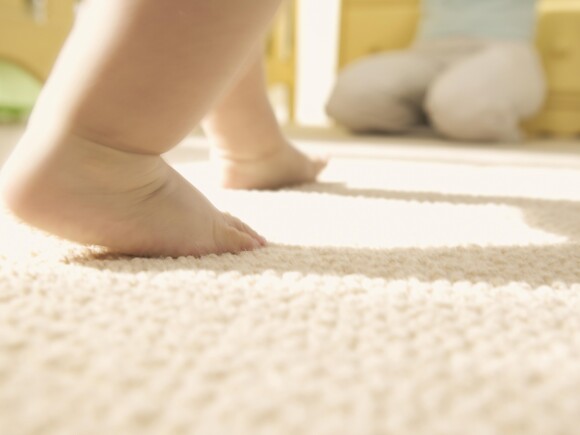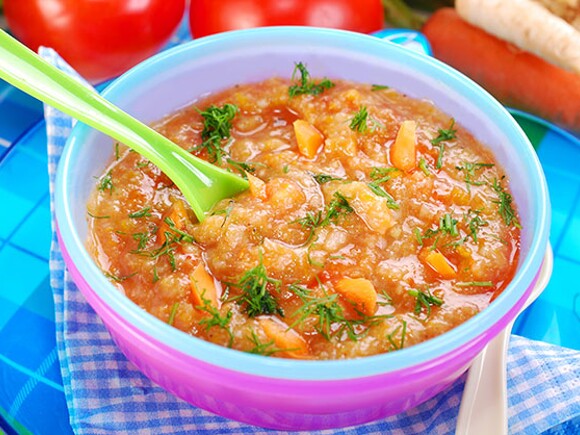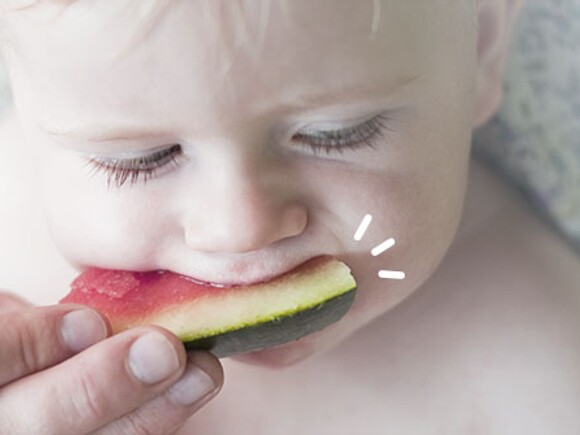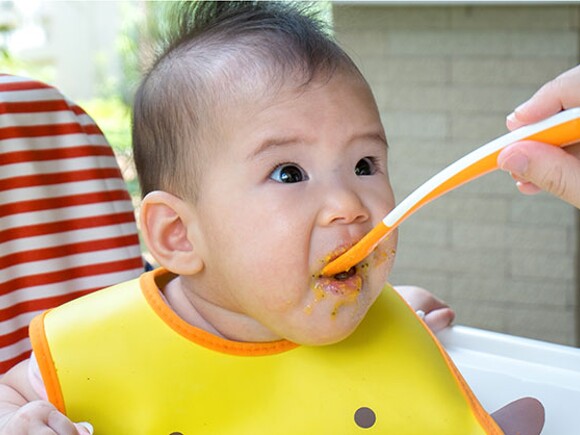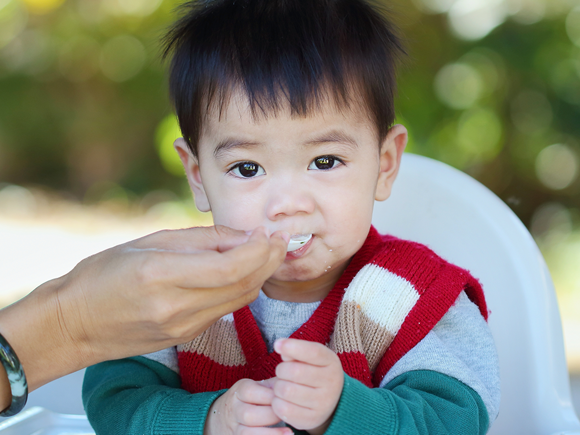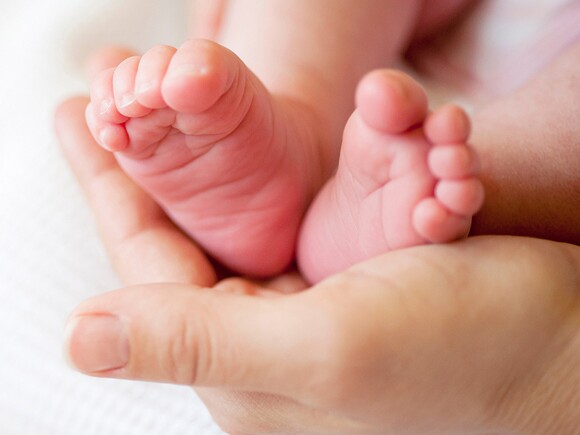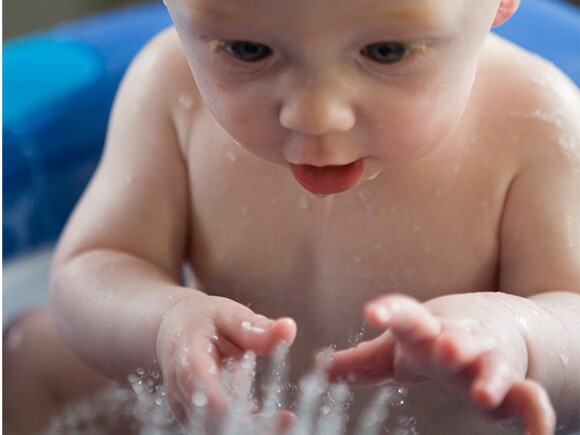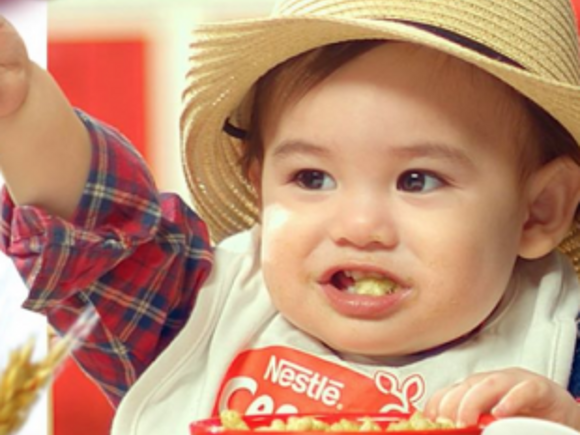DID YOU KNOW?
Better coordination and feelings of independence keep your toddler constantly on the go.
Signs of readiness for infants above 1 year of age
|
Signs of readiness |
Solid Food Recommendations |
|
Takes foods easily with fingers |
Biscuits and fruit cut into finger-sized pieces |
|
Begins to self-feed with spoon |
Food with more texture for chewing and swallowing Develop feeding skills with soft cooked rice, potato, coarsely chopped cooked veggies |
|
Progressively rotates spoon near mouth |
Variety of foods and recipes to discover new taste Examples: Deboned cooked, flaked or chopped meat or chicken, and well-cooked mashed legumes |
|
Begins munching with rotary chew |
Hand-held sticks and slices of soft food for practicing his biting Bite-size food that can be easily mashed by his gums Examples: Sliced bread, apple slices |
TOP TIP! Avoid, or at least limit, your toddler’s sugar and salt intake.
Expect this at 12-18 months
• Tries out utensils in different ways - using spoon for dipping and fork for scooping up food
• Practices chewing more now as 1st year molars are out
• Sits excitedly at the table. Social time with the family as important as the food
Expect this at 19-24 months
• Has unpredictable eating habits – Maganang kumain one day… walang interes kumain the next day
• Hesitates as new foods are introduced. It may take several tries before he opens up. Never insist that he
finishes what is in his bowl. Allow him instead to express his hunger and fullness cues
• Exaggerates his chewing, opens his mouth wider than necessary thus causing food and saliva
to dribble out. Pasensya na lamang, Mommy, ok lang yan!
• Prefers the familiar routine of mealtime—using the same bib, bowl and utensils is comforting to your toddler
TOP TIP! His taller height and heavier weight now may mean that his high chair is no longer needed. Give your toddler his own seat (or booster seat) at the family dining table.
Co-written with Kate Perales, RND
Reference:
Erhardt RP, Lindley S. Functional development of the hand. In A. Gupta, SPJ Kay, & LR Scheker (Eds.), The growing hand: Diagnosis and management of the upper extremity in children. London, England: Mosby, 2000: 71-81.
Carruth BR, Skinner JD. Feeding behaviors and other motor development in healthy children (2-24 months). Journal of the American College of Nutrition.2002;21(2):88-96.
Morris, S.E. & Klein, M.D. Pre-feeding skills–a comprehensive resource for mealtime development, 2nd ed. Austin, TX: Therapy Skill Builders, 2000.










